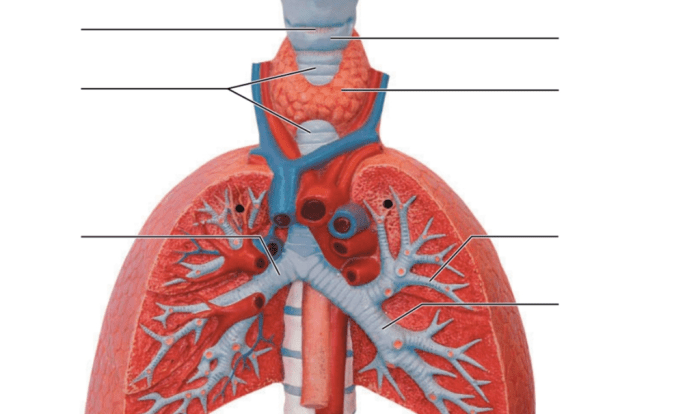Campbell biology concepts and connections eighth edition – Campbell Biology Concepts and Connections, Eighth Edition, unveils a captivating journey through the intricacies of life. This comprehensive text presents a dynamic interplay of fundamental concepts, revealing the interconnectedness of biological systems and the unity of all living organisms. Delving into the latest scientific discoveries and advancements, this edition invites readers to explore the wonders of the living world with unparalleled clarity and engagement.
From the evolutionary origins of life to the intricate workings of cells, from the principles of genetics to the complexities of ecology, Campbell Biology Concepts and Connections weaves a cohesive tapestry of knowledge. This edition empowers students to grasp the essential principles of biology, fostering a deep understanding of the natural world and its profound implications for human society.
Concepts and Connections in Campbell Biology Eighth Edition: Campbell Biology Concepts And Connections Eighth Edition
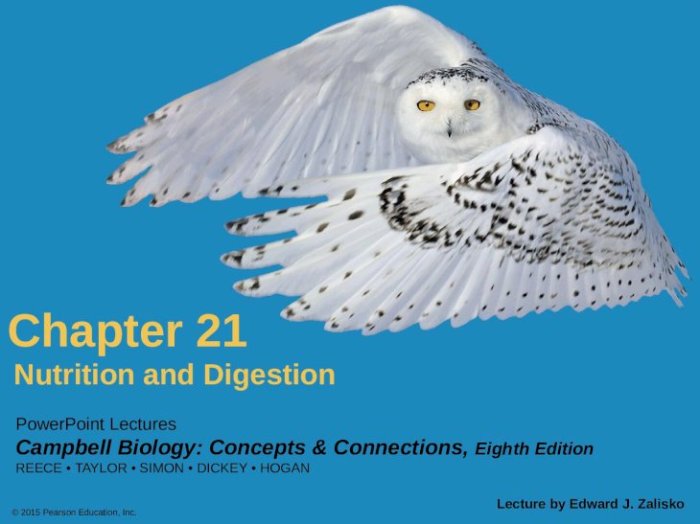
Campbell Biology Eighth Edition presents a comprehensive and interconnected view of the field of biology. The textbook organizes key concepts into thematic units, highlighting the connections between different aspects of the discipline.
These connections are essential for understanding the complexity of biological systems. For example, the unit on evolution explores the relationship between genetic variation, natural selection, and the diversity of life. The unit on cells examines the structure and function of cells in the context of their role in organisms.
Organization of Concepts
- Thematic Units:The textbook is organized into 10 thematic units, each covering a broad area of biology.
- Chapter Structure:Each chapter begins with an overview of the main concepts and ends with a summary and review questions.
- Interconnections:Concepts are connected within chapters and across units through cross-references, sidebars, and case studies.
Evolution and the Unity of Life
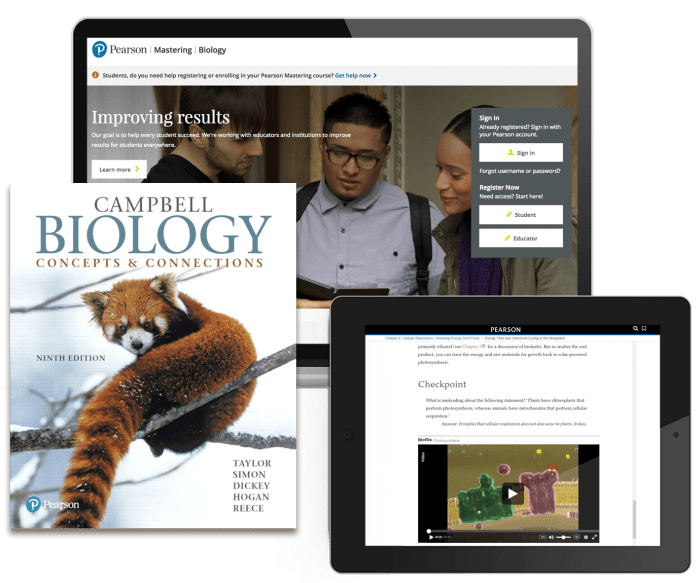
Evolution is the unifying theme of Campbell Biology. The textbook presents a comprehensive overview of evolutionary principles and their application to the diversity of life.
Evidence for Evolution
- Comparative Anatomy:Similarities in the structures of organisms provide evidence for common ancestry.
- Fossil Record:The fossil record documents the changes in organisms over time.
- Molecular Biology:DNA and protein sequences provide evidence for evolutionary relationships.
Mechanisms of Evolution
- Natural Selection:Differential survival and reproduction of individuals with advantageous traits.
- Genetic Drift:Random changes in allele frequencies in small populations.
- Gene Flow:The movement of alleles between populations.
Structure and Function of Cells
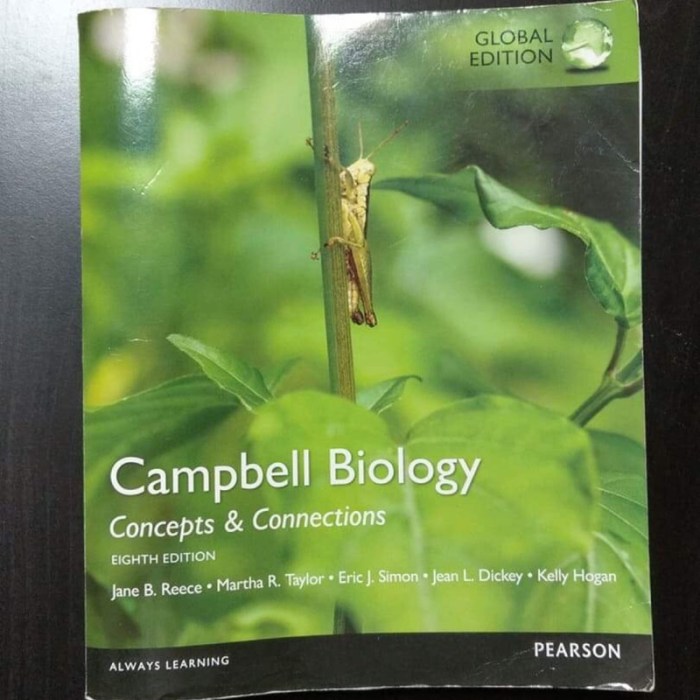
Campbell Biology provides a comprehensive overview of the structure and function of cells, including prokaryotic and eukaryotic cells.
Prokaryotic Cells
- Size and Shape:Typically smaller and simpler than eukaryotic cells.
- Organelles:Lack membrane-bound organelles.
- Reproduction:Reproduce by binary fission.
Eukaryotic Cells
- Size and Shape:Larger and more complex than prokaryotic cells.
- Organelles:Contain membrane-bound organelles, including the nucleus, mitochondria, and endoplasmic reticulum.
- Reproduction:Reproduce by mitosis and meiosis.
Genetics and Molecular Biology
Campbell Biology provides a comprehensive overview of the principles of genetics and molecular biology.
Mendelian Inheritance
- Law of Segregation:Alleles for a gene segregate during gamete formation.
- Law of Independent Assortment:Alleles for different genes assort independently during gamete formation.
- Punnett Squares:Used to predict the probability of offspring with specific genotypes.
Molecular Genetics
- Structure of DNA:A double helix composed of nucleotides.
- Gene Expression:DNA is transcribed into RNA, which is then translated into proteins.
- Genetic Variation:Mutations, recombination, and gene flow introduce genetic variation into populations.
Ecology and the Environment
Campbell Biology provides a comprehensive overview of the principles of ecology and the environment.
Population Ecology
- Population Growth:Populations grow exponentially in the absence of limiting factors.
- Carrying Capacity:The maximum population size that an environment can support.
- Competition:Organisms compete for resources such as food, water, and shelter.
Community Ecology
- Species Interactions:Species interact in a variety of ways, including competition, predation, and mutualism.
- Community Structure:The composition and abundance of species in a community.
- Food Webs:The interconnected feeding relationships within a community.
Ecosystem Ecology, Campbell biology concepts and connections eighth edition
- Energy Flow:Energy flows through ecosystems from producers to consumers.
- Nutrient Cycling:Nutrients are recycled through ecosystems by decomposers.
- Biodiversity:The variety of life on Earth.
Human Biology and Health
Campbell Biology provides a comprehensive overview of the structure and function of the human body systems.
Body Systems
- Integumentary System:Skin, hair, and nails.
- Skeletal System:Bones and joints.
- Muscular System:Muscles.
Diseases
- Cardiovascular Disease:Heart disease and stroke.
- Cancer:Uncontrolled cell growth.
- Diabetes:A disorder of glucose metabolism.
Science, Technology, and Society
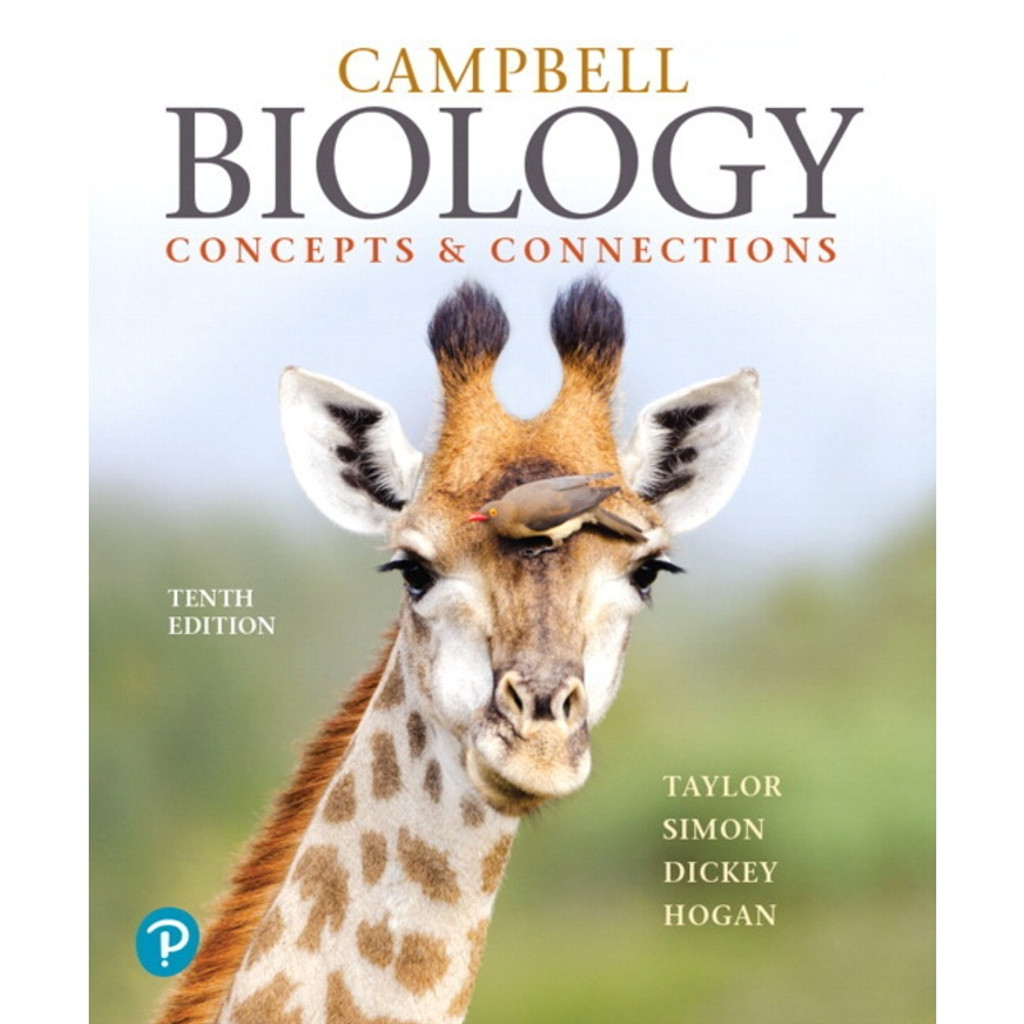
Campbell Biology discusses the ethical, social, and economic implications of advances in biology.
Ethical Issues
- Genetically Modified Organisms:The potential benefits and risks of genetically modifying organisms.
- Stem Cell Research:The ethical implications of using stem cells for research and therapy.
- Cloning:The ethical implications of cloning animals and humans.
Social and Economic Impacts
- Biotechnology:The use of biological systems to develop new technologies.
- Medicine:Advances in biology have led to new medical treatments and technologies.
- Agriculture:Advances in biology have improved agricultural practices and increased food production.
Key Questions Answered
What are the key themes explored in Campbell Biology Concepts and Connections?
The text emphasizes evolution as a unifying theme, exploring the diversity and unity of life. It also highlights the structure and function of cells, the principles of genetics and molecular biology, ecology and the environment, human biology and health, and the ethical, social, and economic implications of scientific advancements.
How is the content organized in Campbell Biology Concepts and Connections?
The text is organized into seven units, each covering a broad area of biology. These units are further divided into chapters that focus on specific topics within each area. The content is presented in a logical and sequential manner, building upon foundational concepts to provide a comprehensive understanding of biology.
What are some of the unique features of Campbell Biology Concepts and Connections?
The text incorporates a variety of pedagogical features to enhance student learning, including chapter Artikels, learning objectives, key terms, chapter summaries, and review questions. It also includes numerous illustrations, diagrams, and tables to visually represent complex concepts.
